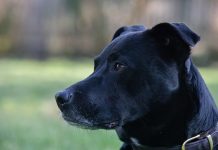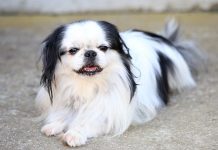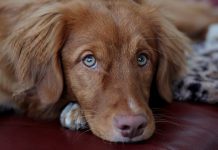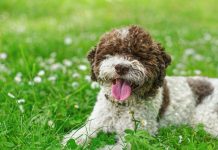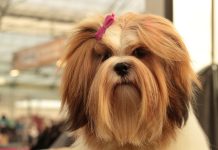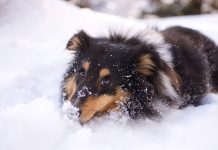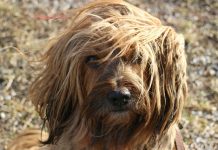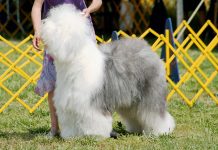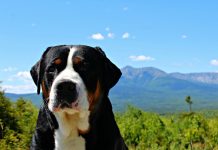History and Origins of the Alaskan Malamute Breed

The Alaskan Malamute is a majestic and ancient breed with a rich history closely intertwined with the indigenous peoples of the Arctic regions. Here’s a detailed look at the history and origins of the Alaskan Malamute breed:
Origins in Arctic Regions:
The Alaskan Malamute is one of the oldest Arctic sled dog breeds, named after the native Inuit tribe known as the Mahlemuts who settled in the Kotzebue Sound area of western Alaska. The breed was developed by the Mahlemut people to assist in hunting and pulling sleds across the harsh and unforgiving Arctic terrain.
Purpose and Role:
Alaskan Malamutes were originally bred as working dogs with remarkable strength, endurance, and intelligence. They were primarily used for pulling heavy sleds loaded with supplies and game, as well as assisting in hunting large prey such as seals and polar bears.
Contributions to Arctic Exploration:
The Alaskan Malamute played a crucial role in Arctic exploration and expeditions, including during the Klondike Gold Rush of the late 19th century. Their ability to haul heavy loads and navigate through challenging snow and ice conditions made them invaluable companions to explorers and prospectors.
Recognition as a Breed:
The Alaskan Malamute was officially recognized as a breed by the American Kennel Club (AKC) in 1935. It is closely related to other Arctic sled dog breeds, including the Siberian Husky and the Samoyed.
Characteristics and Traits:
Alaskan Malamutes are large and powerful dogs known for their distinctive appearance and impressive strength. They have a thick double coat that provides insulation against extreme cold temperatures, with a dense undercoat and a coarse outer coat. Their erect ears, almond-shaped eyes, and wolf-like appearance contribute to their striking appearance.
Modern Role:
Today, while Alaskan Malamutes are still used for sledding and working in some parts of Alaska and other cold regions, they are more commonly kept as companion dogs and family pets. They retain their strong working instincts and thrive in active households where they receive ample exercise and mental stimulation.
Preservation of the Breed:
Efforts are underway to preserve the unique characteristics and working abilities of the Alaskan Malamute while also promoting responsible breeding practices. Breeders and enthusiasts work to maintain the breed’s health, temperament, and adherence to breed standards established by kennel clubs and breed organizations.
The Alaskan Malamute’s history is deeply rooted in Arctic exploration and indigenous cultures of Alaska. Their strength, endurance, and unwavering loyalty have endeared them to dog lovers around the world. As a breed, the Alaskan Malamute continues to embody the spirit of the North and serves as a reminder of the remarkable partnership between humans and dogs in challenging environments.
Physical Characteristics and Appearance of Alaskan Malamutes
The Alaskan Malamute is a large and powerful breed known for its impressive build and striking appearance. Here are the key physical characteristics of Alaskan Malamutes:
- Size: Alaskan Malamutes are considered large dogs, with males typically standing 23 to 25 inches (58 to 63 cm) tall at the shoulder and females slightly smaller at 22 to 24 inches (56 to 61 cm). They generally weigh between 75 to 100 pounds (34 to 45 kg).
- Build: These dogs have a strong and well-muscled build, with a deep chest, broad shoulders, and a sturdy frame. They are built for endurance and strength, ideal for pulling heavy loads over long distances.
- Coat: Alaskan Malamutes have a thick and double-layered coat designed to protect them from harsh Arctic climates. The outer coat is coarse and weather-resistant, while the undercoat is dense and insulating. Their coat comes in various colors, including shades of gray, black, sable, and red. Some Malamutes may have a white facial mask or markings on the face and legs.
- Eyes: Alaskan Malamutes have almond-shaped eyes that are dark brown in color, conveying an intelligent and expressive gaze. Their eyes are set obliquely, providing them with good vision in snowy conditions.
- Ears: Their ears are erect, triangular in shape, and set moderately apart. The ears are well-furred to protect them from cold temperatures.
- Tail: Alaskan Malamutes have a plumed tail that is carried over the back. The tail is well-furred and provides additional insulation when curled over the dog’s face and nose during rest.
- Overall Appearance: Alaskan Malamutes are known for their wolf-like appearance, with a strong resemblance to their ancestors. They exude power and strength while maintaining a friendly and approachable demeanor.
Alaskan Malamute Temperament and Personality Traits
Alaskan Malamutes possess a unique temperament characterized by intelligence, independence, and a strong sense of loyalty. Here are the common personality traits of Alaskan Malamutes:
- Friendly and Affectionate: Despite their imposing size, Alaskan Malamutes are friendly and affectionate dogs. They form strong bonds with their families and enjoy spending time with their human companions.
- Strong-Willed and Independent: Alaskan Malamutes have a reputation for being independent thinkers. They are intelligent dogs but can be stubborn at times, requiring patient and consistent training.
- Energetic and Playful: Malamutes are active and energetic dogs that thrive on physical activity. They enjoy outdoor adventures and excel in activities like hiking, backpacking, and sledding.
- Good with Families: Alaskan Malamutes are generally good with children and can be gentle and patient with them. However, they are large and powerful dogs, so supervision is recommended, especially with younger children.
- Alert and Watchful: Malamutes have a natural instinct to protect their families. They are alert dogs and will bark to alert their owners of any perceived threats.
- Sociable with Other Dogs: With proper socialization, Alaskan Malamutes can get along well with other dogs. Early exposure to different animals and experiences is key to developing good social skills.
- Prey Drive: Due to their strong hunting instincts, Alaskan Malamutes may not be suitable for households with small pets like cats or rabbits unless raised together from a young age.
- Training Needs: Alaskan Malamutes benefit from early socialization and obedience training. Positive reinforcement methods work best with this intelligent and sensitive breed.
- Need for Exercise and Mental Stimulation: Malamutes require regular exercise to stay healthy and happy. They enjoy activities that engage their bodies and minds, such as agility training and interactive games.
In summary, Alaskan Malamutes are wonderful companions for active individuals and families who can provide them with the physical exercise, mental stimulation, and affection they need. With proper training and socialization, they can thrive as loyal and loving members of the family.
Training and Socialization Needs for Alaskan Malamutes
Alaskan Malamutes are intelligent and independent dogs that benefit from early training and consistent socialization. Proper training and socialization are essential to help them become well-adjusted, obedient, and well-mannered companions. Here are some training and socialization tips for Alaskan Malamutes:
- Start Early: Begin training and socialization as soon as you bring your Alaskan Malamute puppy home. Early exposure to various people, places, and situations helps them develop into confident and well-rounded adults.
- Positive Reinforcement: Use positive reinforcement techniques such as praise, treats, and toys to motivate and reward your Malamute for good behavior. Avoid harsh methods or punishment as it can undermine their trust and confidence.
- Basic Obedience Training: Teach basic commands such as sit, stay, come, and heel. Practice these commands regularly in different environments to reinforce obedience and responsiveness.
- Consistency and Patience: Alaskan Malamutes can be stubborn and strong-willed, so consistency and patience are key to successful training. Keep training sessions short, engaging, and positive.
- Socialization with People: Introduce your Malamute to different people of all ages, including children, adults, and strangers. Encourage positive interactions to prevent shyness or fearfulness.
- Socialization with Other Dogs: Expose your Malamute to other dogs in controlled settings such as dog parks or obedience classes. Proper socialization helps prevent aggression or fear-based behavior towards other dogs.
- Leash Training: Malamutes are strong pullers due to their sled-pulling heritage. Teach leash manners and discourage pulling behavior through consistent training and positive reinforcement.
- Channel Energy: Provide outlets for your Malamute’s energy through regular exercise and mental stimulation. Engage in activities such as hiking, jogging, or agility training to keep them physically and mentally stimulated.
- Avoid Boredom: Alaskan Malamutes thrive on activity and interaction. Keep them mentally engaged with puzzle toys, interactive games, and training sessions to prevent boredom-related behaviors like digging or chewing.
Health Considerations and Common Issues in Alaskan Malamutes
While Alaskan Malamutes are generally healthy dogs, they are prone to certain genetic health issues that potential owners should be aware of. Regular veterinary check-ups, proper nutrition, and responsible breeding practices can help minimize health concerns. Common health issues in Alaskan Malamutes include:
- Hip Dysplasia: A hereditary condition where the hip joint doesn’t develop properly, leading to arthritis and mobility issues. Regular exercise and maintaining a healthy weight can help reduce the risk.
- Chondrodysplasia (Dwarfism): Some Alaskan Malamutes may carry a genetic mutation that causes abnormal cartilage growth, resulting in short limbs. Responsible breeding practices can help reduce the incidence of this condition.
- Progressive Retinal Atrophy (PRA): A degenerative eye disease that can lead to blindness. Regular eye exams by a veterinary ophthalmologist are recommended for early detection.
- Hypothyroidism: A common hormonal disorder in dogs that can cause weight gain, lethargy, and skin problems. Regular blood tests can help diagnose and manage this condition.
- Inherited Polyneuropathy: A neurological disorder that affects nerve function and muscle coordination. Responsible breeding practices aim to reduce the risk of passing on this condition.
- Bloat (Gastric Dilatation-Volvulus): A life-threatening condition where the stomach fills with gas and twists on itself. Feeding multiple small meals, avoiding exercise after meals, and monitoring food intake can help reduce the risk.
- Obesity: Alaskan Malamutes are prone to obesity if overfed or under-exercised. Maintain a balanced diet and provide regular exercise to keep them at a healthy weight.
- Allergies: Some Malamutes may develop allergies to food or environmental triggers. Monitor for signs of itching, skin irritation, or gastrointestinal issues and consult with a veterinarian if allergies are suspected.
By being aware of these health considerations and providing proper care, nutrition, and veterinary attention, you can help ensure a long and healthy life for your Alaskan Malamute companion. Regular exercise, mental stimulation, and a loving environment are key to keeping your Malamute happy and thriving.
Living with an Alaskan Malamute: Suitable Environments and Lifestyle Considerations

Alaskan Malamutes are beautiful and affectionate dogs but require specific environments and lifestyles to thrive. Here are some considerations for living with an Alaskan Malamute:
- Space Requirements: Alaskan Malamutes are large and active dogs that need ample space to move around. They do best in homes with fenced yards where they can safely roam and play. Apartments can be too restrictive unless supplemented with regular outdoor exercise.
- Climate Considerations: Malamutes have a thick double coat designed for cold weather. They can tolerate colder climates well but may struggle in hot and humid environments. Provide plenty of shade and access to cool water during warmer months.
- Exercise Needs: Malamutes are high-energy dogs that require daily exercise to stay healthy and happy. Plan for at least one hour of physical activity each day, including brisk walks, jogging, or hiking. They also enjoy pulling activities like sledding or carting.
- Training and Socialization: Proper training and socialization are essential for Malamutes due to their strong-willed nature. Start training early and be consistent with positive reinforcement techniques. Socialize them with other dogs and people to prevent behavioral issues.
- Grooming Requirements: Malamutes shed heavily twice a year and require regular grooming to manage their thick coat. Brush them several times a week, especially during shedding seasons, and bathe them as needed to keep their coat clean and healthy.
- Interaction with Children and Pets: Alaskan Malamutes can be gentle and patient with children when properly socialized. However, due to their large size and strong prey drive, supervision is necessary, especially with small children and smaller pets.
- Feeding and Nutrition: Provide a balanced diet suitable for large, active breeds to maintain their energy levels and overall health. Avoid overfeeding to prevent obesity, which can lead to health issues.
- Companionship and Attention: Malamutes thrive on companionship and enjoy being part of a family. They can develop separation anxiety if left alone for long periods, so ensure they receive plenty of attention and interaction.
- Healthcare and Veterinary Care: Regular veterinary check-ups are crucial to monitor your Malamute’s health and address any potential issues early. Stay up-to-date on vaccinations, parasite control, and dental care.
Alaskan Malamute Variations and Breeding Practices
Alaskan Malamutes are a relatively uniform breed with minimal variations compared to other breeds. However, responsible breeding practices aim to maintain and improve the breed’s health, temperament, and adherence to breed standards. Here are some considerations related to Alaskan Malamute variations and breeding practices:
- Color Variations: Alaskan Malamutes come in various coat colors, including shades of gray, black, sable, and red. Some may have white markings or a mask on the face. Breeders strive to produce puppies that conform to breed standards in terms of color and markings.
- Size and Structure: Alaskan Malamutes have a specific size range and build outlined in breed standards. Responsible breeders select breeding pairs that exhibit correct size, structure, and proportion according to breed guidelines.
- Health Testing: Reputable breeders conduct health screenings for genetic conditions such as hip dysplasia, inherited polyneuropathy, and progressive retinal atrophy (PRA) to ensure healthy puppies. They aim to minimize the risk of passing on hereditary health issues through responsible breeding practices.
- Temperament and Behavior: Breeders prioritize temperament and behavior traits that are characteristic of Alaskan Malamutes, including friendliness, intelligence, and adaptability. Early socialization and exposure to different stimuli are key components of responsible breeding practices.
- Ethical Considerations: Responsible breeders are committed to the welfare of their dogs and adhere to ethical breeding practices. They provide proper care, nutrition, and socialization to breeding dogs and puppies, ensuring they are raised in a loving and healthy environment.
When acquiring an Alaskan Malamute, it’s essential to research and choose a reputable breeder who prioritizes health, temperament, and adherence to breed standards. By supporting responsible breeding practices, you contribute to the preservation and well-being of this magnificent breed.
50 Best Names with Meanings for Alaskan Malamutes
Naming your Alaskan Malamute is an exciting part of welcoming them into your family. Here’s a list of 50 great names along with their meanings that could suit your Alaskan Malamute perfectly:
Male Alaskan Malamute Names:
- Kodiak – Named after the Kodiak bear, symbolizing strength and power.
- Thor – Inspired by the Norse god of thunder, representing strength and courage.
- Loki – Named after the mischievous Norse god, perfect for a playful Malamute.
- Denali – Named after the tallest mountain in North America, representing strength and endurance.
- Nanook – Means “polar bear” in Inuit, ideal for a white or fluffy Malamute.
- Ares – Named after the Greek god of war, symbolizing bravery and valor.
- Bodhi – Means “awakening” or “enlightenment” in Sanskrit, perfect for an intelligent Malamute.
- Aspen – Named after the majestic tree, ideal for a Malamute who loves the outdoors.
- Blaze – Represents fire and energy, suitable for an energetic Malamute.
- Kai – Means “sea” in Hawaiian, great for a Malamute who loves water and adventure.
Female Alaskan Malamute Names:
- Aurora – Named after the northern lights, symbolizing beauty and wonder.
- Luna – Means “moon” in Latin, ideal for a Malamute with a calm and mysterious aura.
- Kona – Named after the Hawaiian coffee region, representing strength and vitality.
- Nova – Means “new” or “young star,” perfect for a bright and energetic Malamute.
- Sasha – Means “defender of mankind,” suitable for a protective and loyal Malamute.
- Willow – Named after the graceful tree, symbolizing flexibility and resilience.
- Sierra – Means “mountain range,” ideal for a Malamute who loves outdoor adventures.
- Zara – Means “princess” in Arabic, great for a Malamute with regal qualities.
- Misty – Represents mystery and allure, suitable for a Malamute with a unique personality.
- Skye – Named after the Scottish island, symbolizing freedom and open spaces.
Unique Alaskan Malamute Names:
- Kaiju – Means “strange creature” in Japanese, perfect for a unique-looking Malamute.
- Tundra – Represents the vast Arctic wilderness, ideal for a Malamute bred for cold climates.
- Summit – Symbolizes reaching new heights, suitable for a Malamute who loves adventures.
- Maverick – Represents independence and nonconformity, great for a strong-willed Malamute.
- Yukon – Named after the Yukon River, symbolizing strength and endurance.
- Echo – Represents reflection and resonance, ideal for a vocal Malamute.
- Bandit – Suitable for a mischievous Malamute with a playful streak.
- Orion – Named after the constellation, symbolizing strength and guidance.
- Sable – Represents the coat color, suitable for a Malamute with a dark and striking appearance.
- Blizzard – Represents a snowstorm, ideal for a Malamute bred for cold climates.
Strong Alaskan Malamute Names:
- Ragnar – Means “warrior” in Norse, ideal for a strong and brave Malamute.
- Atlas – Named after the Titan who held up the sky, symbolizing strength and endurance.
- Moose – Represents a large and powerful animal, suitable for a robust Malamute.
- Thunder – Symbolizes power and energy, great for a Malamute with a booming bark.
- Valkyrie – Named after the warrior maidens of Norse mythology, ideal for a fearless female Malamute.
- Titan – Represents immense size and strength, suitable for a large Malamute.
- Axel – Means “father of peace” or “peaceful,” ideal for a Malamute with a calm demeanor.
- Brutus – Represents strength and toughness, suitable for a resilient Malamute.
- Jagger – Inspired by the rock star, ideal for a Malamute with a bold personality.
- Spartan – Named after the ancient warriors of Sparta, symbolizing courage and resilience.
Elegant Alaskan Malamute Names:
- Aria – Means “air” or “melody,” ideal for a graceful and melodious Malamute.
- Mystique – Represents mystery and allure, suitable for a Malamute with a captivating presence.
- Zephyr – Named after the gentle breeze, symbolizing grace and fluidity.
- Lumina – Means “light” or “brilliance,” great for a Malamute with a radiant personality.
- Cassia – Means “cinnamon,” ideal for a Malamute with a warm and inviting demeanor.
- Phantom – Represents mystery and intrigue, suitable for a Malamute with a dark and striking appearance.
- Celeste – Means “heavenly” or “divine,” ideal for a Malamute with an angelic presence.
- Seraphina – Named after the angels, symbolizing purity and grace.
- Oasis – Represents a peaceful and rejuvenating place, suitable for a calming Malamute.
- Elara – Named after a moon of Jupiter, symbolizing beauty and elegance.
Choose a name that resonates with you and reflects your Alaskan Malamute’s personality, appearance, or characteristics. Whether you prefer traditional names, unique and meaningful names, or strong and elegant names, these options should inspire you to find the perfect name for your beloved Alaskan Malamute!

In summary, this guide has provided a comprehensive overview of the Alaskan Malamute dog breed, highlighting its distinctive characteristics and essential care considerations. Throughout our exploration, we’ve delved into the history, unique traits, and important aspects of owning an Alaskan Malamute.
Alaskan Malamutes are known for their strength, endurance, and friendly disposition. They are intelligent, loyal companions that thrive on physical activity and outdoor adventures. Proper exercise, training, and socialization are key to ensuring the well-being and happiness of an Alaskan Malamute.
As you embark on your journey with an Alaskan Malamute, it’s important to provide them with love, attention, and proper care. With patience and consistency, you can develop a strong bond and enjoy a fulfilling companionship with this majestic and resilient breed.
Remember to consult with veterinarians and experienced dog trainers for specific guidance tailored to your Alaskan Malamute’s individual needs. By understanding and meeting their needs, you’ll create lasting memories and cherish the joy they bring into your life.







